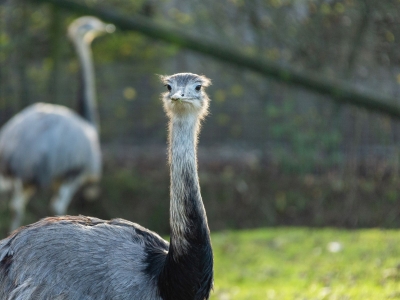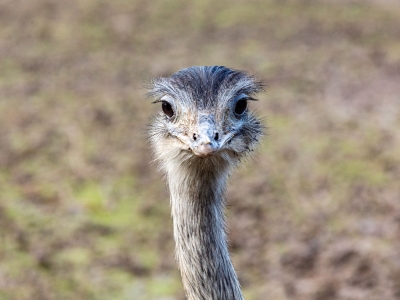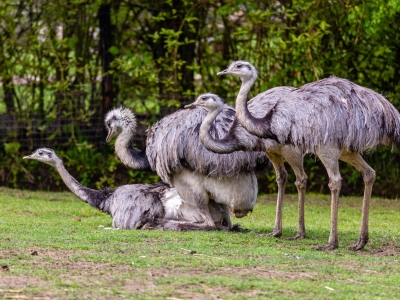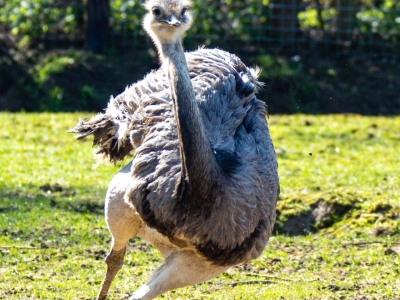Rhea Rhea Americana
Animals in our sanctuary
Oak (Male)

Oak, together with four other nandoes, comes from a Dutch zoo. The zoo decided that the animals were not good enough as a crowd puller and chose to get rid of them. We regularly get stories of animals that are pushed aside by zoos because they prefer to show the bigger and more spectacular animals. The fate of these animals is often questionable: do they find a sanctuary where they are wanted or are they euthanized as a 'problem'?
Birch (female)

Birch, together with four other nandoes, comes from a Dutch zoo. The zoo decided that the animals were not good enough as a crowd puller and chose to get rid of them. We regularly get stories of animals that are pushed aside by zoos because they prefer to show the bigger and more spectacular animals. The fate of these animals is often questionable: do they find a sanctuary where they are wanted or are they euthanized as a 'problem'?
Juniper (female)

Juniper, together with four other nandoes, comes from a Dutch zoo. The zoo decided that the animals were not good enough as a crowd puller and chose to get rid of them. We regularly get stories of animals that are pushed aside by zoos because they prefer to show the bigger and more spectacular animals. The fate of these animals is often questionable: do they find a sanctuary where they are wanted or are they euthanized as a 'problem'?
Rowan (Male)

Rowan, together with four other nandoes, comes from a Dutch zoo. The zoo decided that the animals were not good enough as a crowd puller and chose to get rid of them. We regularly get stories of animals that are pushed aside by zoos because they prefer to show the bigger and more spectacular animals. The fate of these animals is often questionable: do they find a sanctuary where they are wanted or are they euthanized as a 'problem'?
Where does it feel at home?
On the high and low plains of eastern and south-eastern South America.
What does it like to eat?
The menu is varied, from grass, fruit and seeds to insects, lizards and frogs.
Fun fact:
The rhea cannot fly, but it can run. During short periods of time it can reach speeds up to 60 km per hour. It uses its wings to keep its balance and to make right-angled turns in front of its enemies during flight.
Males have a black ring at the base of the neck during the breeding season.
Adopt this Rhea





